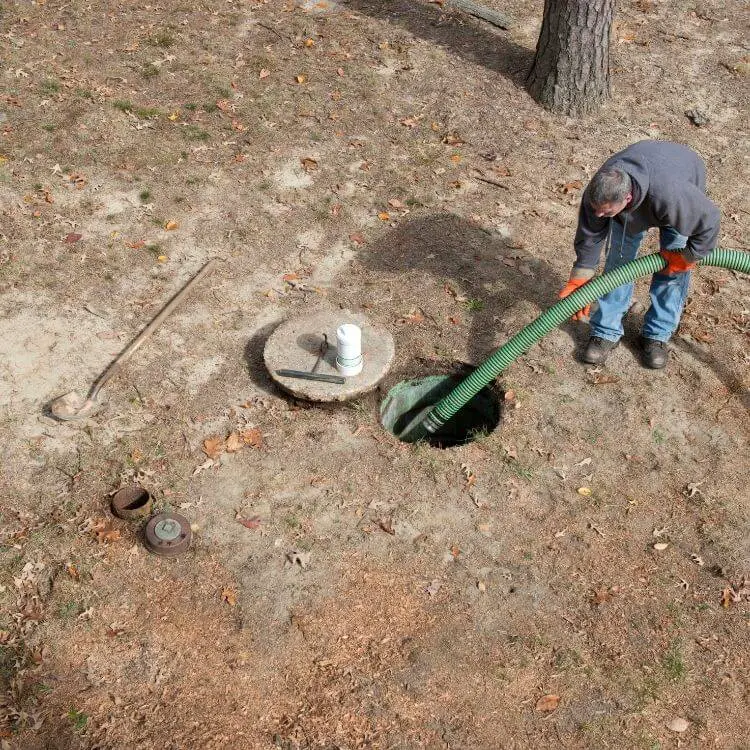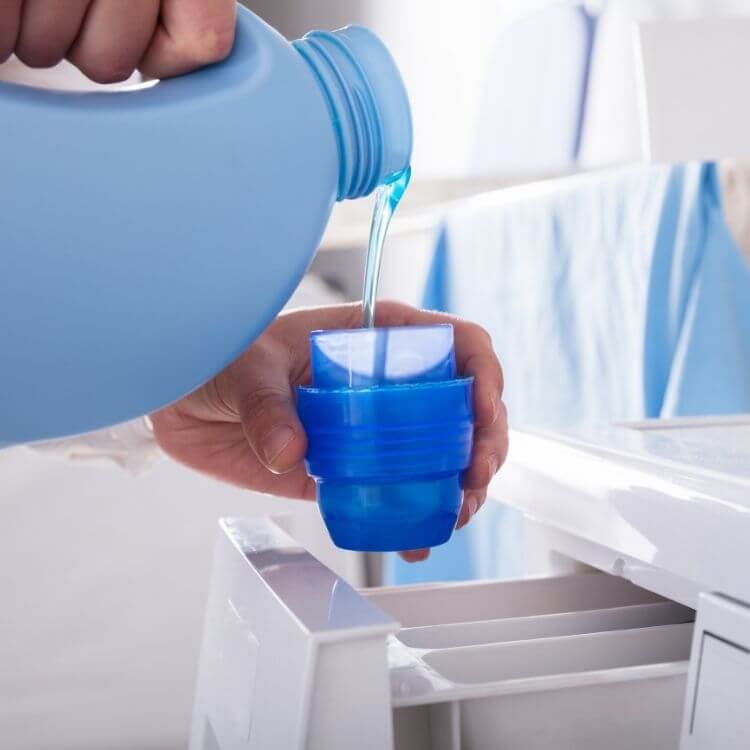If you have a septic system at home, you have probably wondered what products are safe to use in your household. So, what about OxiClean? Is OxiClean safe for a septic system?
Don’t worry; OxiClean Versatile Stain Remover is perfectly safe for your septic system. However, before we go through the ingredients of OxiClean, there is a couple of things you should know in general.
Things You Should And You Should Not Use
First of all, adding too many harsh chemical products to your septic system can mess with the bacterial balance needed for a healthy tank. It is best to keep it simple: use as many natural products as possible. Try to find the products labeled ‘septic-safe’ or ‘environmentally-friendly.’
You could also use biodegradable products and the ones based on water. Everything you use will eventually finish in the septic tank: soap bar, shampoo, laundry detergent, dishwasher detergent, bathroom cleaner, etc. If you have no other choice but to use some harsh chemical products, be careful. Avoid doing it often and try to limit it to a small quantity.
Besides avoiding harsh chemicals, you should be careful about other things you put in your tank. For example, it is best to prevent garbage disposals, diapers, tampons, sanitary pads, wet wipes, coffee grounds, cooking grease, or cigarette butts. And of course: if your system is already clogged, try unblocking it without chemicals first. For example, you could use boiling water or a drain snake.
No matter the type of system you have installed at your home, it is also essential to keep it clean. Poor maintenance can lead to clogging and drain field malfunctions. Even when you pay attention to the things that finish into a septic system, it is best to empty it every once in a while. Three to five years is optimal.
Of course, the actual frequency can vary depending on your usage and how many people live in your home. If you live alone, your tank may need to be emptied rarely, and if you have an enormous household, it should be unloaded more frequently. [1]
Read Also: How to Check If Septic Tank Is Full
To return to the subject and learn is OxiClean safe for a septic system. It is made of several ingredients, but the main one is sodium percarbonate: an adduct of sodium carbonate and hydrogen peroxide.
When you put it in water, it breaks down into hydrogen peroxide (soda ash), which compounds in the environment without toxic after-effects. Or any effect to your septic system whatsoever. So yes, OxiClean is perfectly safe for use.
Another good thing is that it has many uses, not only for doing laundry.
Is OxiClean Safe For a Septic System?

You know if Oxiclean is safe for a septic system, but what about its White Revive line? The excellent news, Oxiclean White Revive is also safe for your septic system.
Compared with regular OxiClean, OxiClean White Revive powder is a laundry-only product. At the same time, OxiClean Versatile Stain Remover has many uses and laundry. [3]
It is also an excellent alternative to regular bleach, which is not recommended for use when you have a septic tank. Meaning bleaches usually contain chlorine. We will get to the bad side of the chlorine later in the text, but for now, you should know that OxiClean White Revive uses a chlorine-free formula. Another plus is that it is one of the whiteners that are color-safe.
What is the safest laundry detergent for septic systems?

As mentioned above, as long as you use detergents that have been labeled as ‘septic-safe,’ you should be fine. If the detergent does not have this label, make sure it is biodegradable and eco-friendly.
Why is this important? Common additives in detergents are phosphates and surfactants. They increase the cleaning power of the detergents: surfactant detergents are used to enhance detergents’ wetting, foaming, dispersing, and emulsifying properties. Phosphate detergents are used in detergents to soften hard water and help suspend dirt in the water.[4]
However, they can cause health problems and significant environmental hazards. They can quickly soak into the drain field and contaminate the groundwater. The best thing to do is avoid this type of detergent and look for phosphate-free versions.
One more thing you should think about when choosing the perfect laundry detergent is that form is not as important as the product’s composition. Meaning, it doesn’t matter if you choose powdered or liquid detergent. The septic system needs the right balance of water and bacteria to keep the system healthy. If you use many chemical-based ingredients, it can mess up with the design and pollute the environment.
Therefore, it will be the same if you use the powdered or liquid form of the laundry detergent. As long as it has a harsh chemical composition – it is bad for your septic system.
Some of the ingredients you should skip:
- Anything that says ‘anti-bacterial’ on the label. Since you want the bacteria in your septic system, these products can only do the opposite.
- Chlorine Bleach and Ammonia. Although it can keep your bathroom clean, it will also kill the bacteria you need for the septic system.
- Phosphates. They can make it to the local waterways and harm the local fish and plants.
On the other side, these are some of the ingredients that are good to use:
- Essential and plant-based oils. For example, the popular ones are lemon, eucalyptus, and lavender essential oil.
- Pure washing soda or baking soda with no fillers and additives. Feel free to choose the laundry detergents compatible with your lifestyle and preferences. [5]
Is Arm and Hammer with OxiClean safe for septic systems?
Arm and Hammer plus OxiClean is safe for your septic system as well.
There are some quite expensive detergents out on the market. Still, we suggest you stick to the budget and choose a classic: Arm and Hammer Plus OxiClean Laundry Detergent. As regular OxiClean, it also breaks down into harmless compounds like water and soda ash when they’re flushed down the sink so that it won’t hurt your septic system.
Septic safe bleach
You probably already know that under the name bleach goes any chemical product used to remove the color from a fabric or a stain from something.
The thing is, most of the commercial bleaches contain chlorine. Chlorine is a chemical element that is affordable and available throughout the world. It has been used for years for all kinds of stuff: to help drinking water germ-free, whitening products such as paper, cotton, and laundry, and disinfect swimming pools.
But chlorine is also toxic to the environment, as well as for your septic tank. Since it acts as a sanitizer, it will eliminate good bacteria in your septic tank. Don’t worry; it will not damage your septic system if you use it moderately. However, some safer alternatives will cover your needs for bleaching.
For example, hydrogen peroxide. It can be used as a bleach substitute since it has mild bleaching performance: it can remove stains and bring back white in your clothes. Hydrogen peroxide is biodegradable and doesn’t negatively impact the environment. It is cheap, and you can buy it in any pharmacy.
Vinegar and baking soda are classics: cheap, and you already have them at home. They are super choices for natural-friendly sanitizers. You can use them separately or make a mixture diluted with water. Spray them anywhere: on the bathroom or kitchen tiles, toilet bowl, clean sink, and your bath with the combination.
Lemons are another excellent option. They contain citric acid, which helps break down stains. Soak the stains from your dirty clothes before washing, or add a cup of lemon juice directly into your washing machine. Some people like to add lemon juice into the vinegar cleaning mixture to get a fresh and natural scent.
Indeed, if you prefer something store-bought, you should search for bleaches labeled with ‘non-chlorine’ or ‘oxygen bleach.’ Then again, you could try OxiClean White Revive, an excellent chlorine bleach alternative.
Read Also: Septic Tank Filling With Groundwater
Is OxiClean Safe For a Septic System? – Final Word
Don’t overthink it. Please keep it simple: try using mild products as much as possible. Minimize the usage of harsh chemical products and your septic system, do not throw solids or grease in your tank, and it will last long enough.
And, of course, take care of the septic tank itself. Be sure to empty it every three to five years.
FAQ
- Is Persil safe for septic systems?
Persil is safe for septic systems. However, if you ask us for a recommendation, a safer option would be to choose some detergent mentioned in the text above. For example, OxiClean Versatile Stain Remover or OxiClean White Revive.
Or you could even try to make your laundry detergent. Of course, if you are already using Persil and are satisfied with it, keep using it at a reasonable amount. Try to choose those with more natural and mild ingredients, such as Persil ProClean Power Pearls-Powder Laundry Detergent.

Michael Davis is a heating & plumbing expert who currently works as independent contractor in SC. He also writes for Plumbertip.
For almost 10 years he worked on various plumbing tasks across South Carolina.


